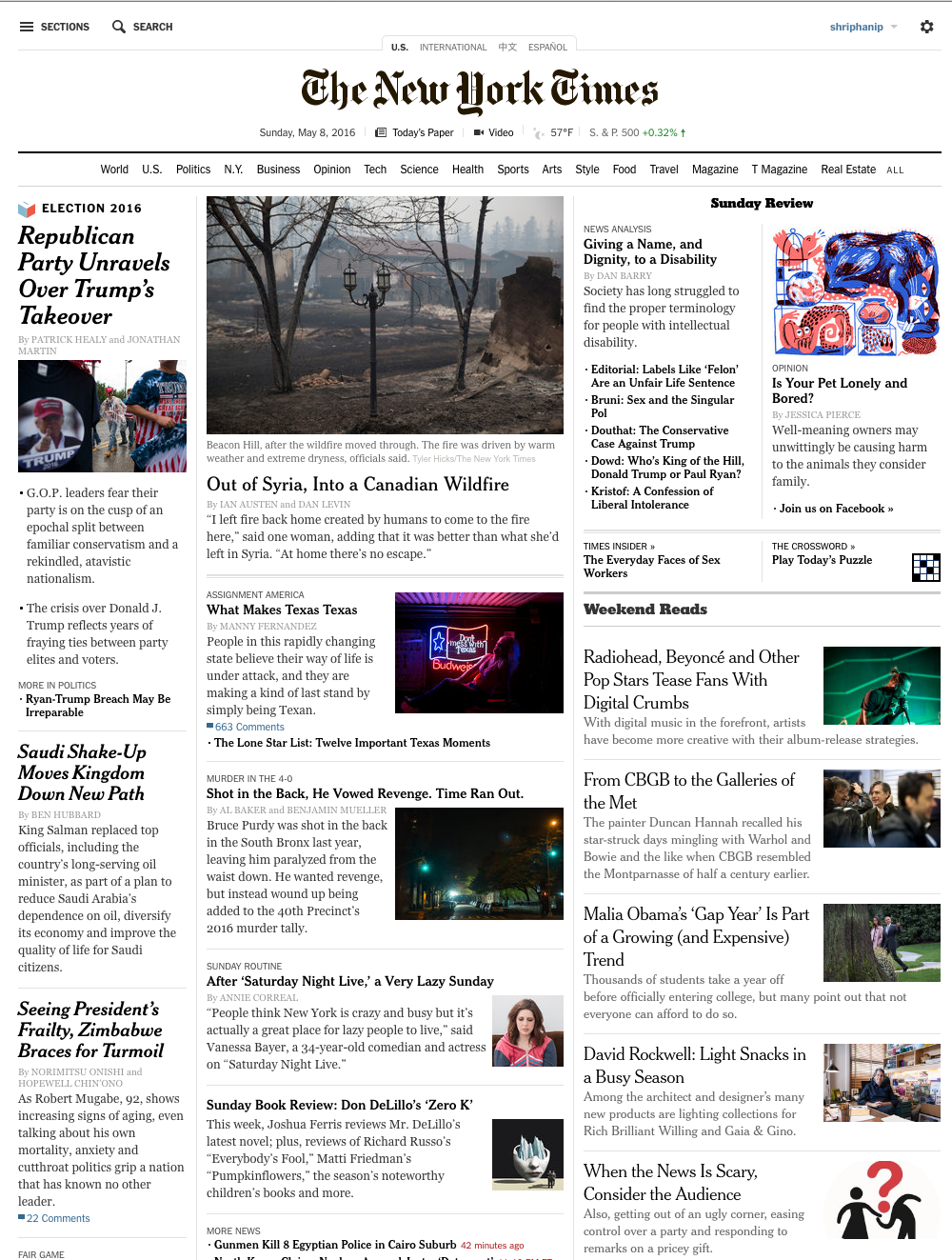Consuming News: 2016
Quartz has a new news app - an absolute peach.

The NYTimes in comparison is a brain-dump.

As a kid, in the pre-WWW days, people around me consumed news in the following forms (I couldn’t be bothered):
- 30 minute segments thrice a day on a popular TV network.
- Newspaper covering stuff from a time-period between last week and 2:00 am this morning.
- 24 hour news on TV.
The WWW presented a challenge (and still does) for traditional news orgs. I believe all content gets 2 kinds of eyeballs - the kind of folk who are looking for exactly that content and the kind who are bored and will watch whatever is on. When a TV producer sets up a narrative for a day’s worth of programming, you get the attention of both these groups - there are few other options.
In an on-demand world, long-form news that is hastily put together needs to compete with youtube videos, reddit and so on. Converting a narrative of events into a blob of text you can put on your site is going to attract only the kind of people who want to read this sort of stuff in their spare time.
In my experience this species loves the color beige and has the world-view of prep-school headmasters.
And to capture and lock down this audience, you are forced to convert journalism into a weird vaudeville performance. In fact The Daily Show ended up becoming a meta-news org making fun of this phenomenon.
As print journalism and 24 hour news orgs die, I see 2 main vehicles for news consumption emerging:
- Breaking news outside traditional media cycles - plane crashes, etc. This is stuff that will go viral on social media before a reporter arrives at the site.
- Breaking news within traditional media cycles. A presidential candidate’s decision to drop out of a race will typically be leaked to the NYTimes or some other established organization.
- A stream of news delivered thrice a day - possibly personalized since people don’t enjoy their senses being assaulted with information all the time. The new Quartz app (I think) fits this space nicely. The NYTimes has an app called NYTNow but it isn’t clear to me if the feed is personalized at all. Given that the service has a twitter presence, it is entirely possible that there is zero personalization.
- Long form analysis with amazing visualizations. This sort of stuff requires expertise along several dimensions - something I’ve seen the NYTimes excel at. They produced this brilliant piece on school districts, this exceptional piece on Michael Bloomberg’s tenure as mayor and this beautiful piece on the silk road.
This leaves us with how to make $$.
I don’t think breaking news is a serious vehicle to make money (anymore). However existing media shops need to invest in this space to maintain an aura of legitimacy. This might change in the future but today’s expectations of a news org include breaking news. It might be ok for a newer media org to become purely an analysis-based-reporting organization (like Nate Silver’s http://fivethirtyeight.com/), but I would still like the news app to alert me when something serious happens (like the Paris attacks) and not have to discover this on Twitter.
Quartz has been delivering small ads in the news stream that look like this:

I like these sorts of ads - they aren’t intrusive (well, for now) and possibly get you more impressions than whatever the status quo is.
There are 2 additional examples I want to cover. TomoNews is an incredibly creative news org. The animated shorts are rather entertaining.
BuzzFeed has mastered the art of bringing people to their site, creating a stable revenue stream from their baity content and produce some very nice long-form news articles.
To survive, journalism needs to change. There are new gatekeepers, new platforms and new competitors. News needs to change from a brain-dump to a new kind of performance art. Existing media powerhouses have several weapons in their war chest - a brand-name that resonates well, existing relationships with the rich and powerful, and revenue streams (they might be dwindling but at least they’re around).
This soft-power needs to mix with the best photography, web-design, typography and visualization-tech. Each piece of investigative journalism should become a distinct, pleasant memory - like when Walter Cronkite covered the moon landings:
In short, give people something they will enjoy for a reasonable price.